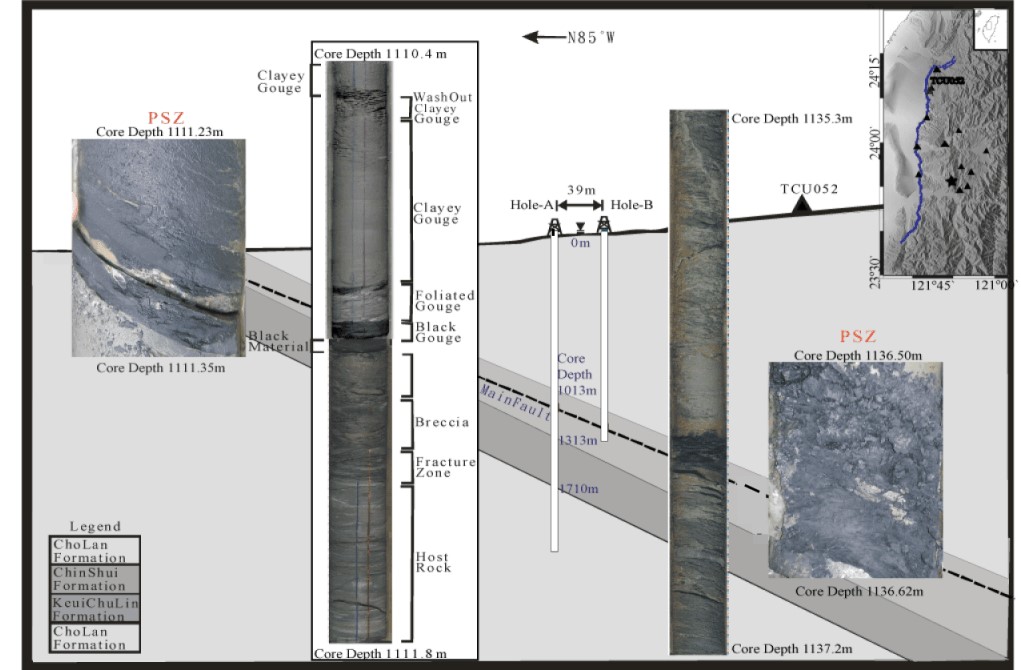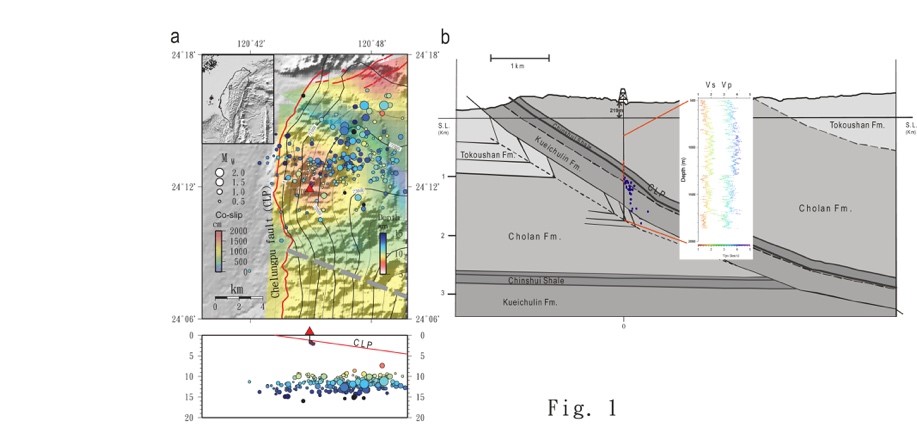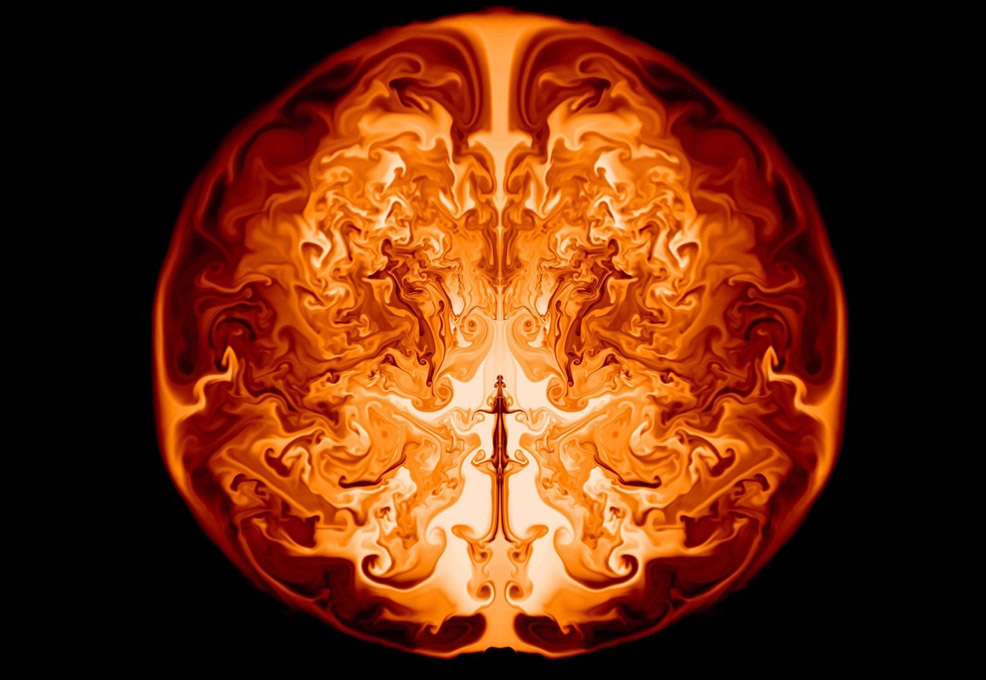Data Science for Production Management and Process Diagnosis

Author(s)
Kuo-Fong MaBiography
National Central University
Source
- Ma, K.-F., H. Tanaka, S.-R. Song, C.-Y. Wang, J.-H. Hung, Y.-B. Tsai, J. Mori, Y.-F. Song, E.-C. Yeh, W. Soh, H. Sone, L.-W. Kuo & H.-Y. Wu (2006). Slip zone and energetics of a large earthquake from the Taiwan Chelungpu-fault Drilling Project, Nature Vol 444, doi:10.1038/nature05253.
- Ma, K.-F., Y.-Y. Lin, S.-J. Lee, J. Mori, E. E. Brodsky (2012). Isotropic Events Observed with a Borehole Array in the Chelungpu Fault Zone, Taiwan, Science , 337, 459 (2012), DOI: 10.1126/science.1222119.
- Lin,Y.-Y., K.-F. Ma, H. Kanamori, T.-R. A. Song, N. Lapusta and V. C. Tsai (2016).Evidence for non-self-similarity of microearthquakes recorded at a Taiwan borehole seismometer array, Geophys. J. Inter., 206, 757–773, doi: 10.1093/gji/ggw172.
- Lin, Y.-Y. & Lapusta, N. (2018). Microseismicity simulated on asperity-like fault patches: on scaling of seismic moment with duration and seismological estimates of stress drops, Geophys. Res. Lett., 45, doi.org/10.1029/2018GL078650.
-
TAGS
-
Share this article
You are free to share this article under the Attribution 4.0 International license
- NATURAL SCIENCES
- Text & Image
- July 19,2019
As a two-decade commemoration of the 1999 magnitude 7.7 earthquake in Chi-Chi, Taiwan, which produced a large slip (8 to 10 meters) at or near the surface, and brought severe damage to almost the whole island of Taiwan, here we briefly introduce what we have learnt from this earthquake scientifically, and its contribution to the earthquake community on the understanding of the kinematics and dynamics of a large earthquake. The 1999 Chi-Chi earthquake ruptured an eastern shallow dipping (30 degree) reverse fault, which is accessible to borehole drilling (named the Taiwan Chelungpu-fault Drilling Project, TCDP) and thus provides a rare opportunity to sample a fault that had a large slip from an earthquake, and also a unique setting to understand the fault zone revolution after a large slip through a fault zone borehole observatory. In this project, we discovered the most recent rupture primary slip zone for an understanding of the energy partition of a single event (Ma et al., Nature, 2006). A deep vertical borehole array was installed on the fault zone after successful drilling to detect and monitor the feature of fault zone dynamics after a large slip (Ma et al., Science, 2012).

Layout of Taiwan Chelungpu-fault Drilling Project, TCDP, and the retrieved Primary Slip Zone (PSZ) associated with the 1999 Chi-Chi, Taiwan, Earthquake
As a two-decade commemoration of the 1999 magnitude 7.7 earthquake in Chi-Chi, Taiwan, which produced a large slip (8 to 10 meters) at or near the surface, and brought severe damage to almost the whole island of Taiwan, here we briefly introduce what we have learnt from this earthquake scientifically, and its contribution to the earthquake community on the understanding of the kinematics and dynamics of a large earthquake. The 1999 Chi-Chi earthquake ruptured an eastern shallow dipping (30 degree) reverse fault, which is accessible to borehole drilling (named the Taiwan Chelungpu-fault Drilling Project, TCDP) and thus provides a rare opportunity to sample a fault that had a large slip from an earthquake, and also a unique setting to understand the fault zone revolution after a large slip through a fault zone borehole observatory.
From the retrieved cores of the international collaborated TCDP, a 12-cm primary slip zone (PSZ) associated with the Chi-Chi earthquake was identified at a depth of about 1111m at the town of Dakeng (Fig. 1), where a 2 km vertical hole was drilled. The discovered PSZ is the first ever, and still the only one to reveal the clear slip zone of a large earthquake. The 12 cm PSZ indicates the slip zones which resulted from several repeating earthquakes. It suggests the repeating behavior of large earthquakes, and thus earthquakes might exhibit periodic behavior. An ultrafine grain zone with a thickness of 5-mm was discovered in the bottom of each layer with the less-deformed slip zone as the major slip zone (MSZ) related to the 1999 Chi-Chi earthquake (Ma et al., 2006, Nature). The thin thickness and ultrafine grains of a slip zone with a large co-seismic slip of 12 m at the drill site suggest large thermal heating behavior during an earthquake. The identification of the slip thickness of a single event, and the fault gouge of MSZ retrieved from TCDP advanced the understanding of the physical and chemical dynamic behavior during faulting.

Fig. 1. Taiwan Chelungpu fault zone status after a large earthquake from previous studies, and the layout of the TCDPBHS, the isotropic events, and the event clusters from decollement.
After drilling, a seven-level vertical borehole seismic array (TCDPBHS) was installed through the PSZ (Fig. 1). This is also a first ever and still the only borehole observatory across a recent ruptured slip zone. The most significant finding through TCDPBHS is to observe the isotropic events which were explained as events with an explosive/implosive mechanism driven by the fluid within a complete stress drop regime capped by a low permeability primary slip zone (Ma et al., 2012, Science). It suggests the significant role of fluid in the fault zone. While Shear failure is the dominant mode of earthquake-causing rock failure along faults, this study provides seismological evidence that high fluid pressure can also potentially induce rock failure by opening cavities and cracks. Modeling of the events suggests an isotropic, non-shear source mechanism likely associated with natural hydraulic fractures. These seismic events may be associated with the formation of veins and other fluid features often observed in rocks surrounding fault zones, and may be similar to artificially induced hydraulic fracturing.
In addition to the observations of the isotropic events, through almost a decade of observation of TCDPBHS, significant and intriguing features have continued to be discovered. The identification of several event clusters, which have an almost two order difference in magnitudes scale within the cluster with high waveform similarity, suggests a nearly constant rise time for events within each cluster, regardless of seismic moments (Lin et al., 2016). This constant duration may arise either because all events in a cluster are hosted on the same isolated seismogenic patch, or because the events are driven by external factors of constant duration, such as fluid injections into the decollement. It may also be related to the earthquake nucleation size. The modeling for earthquake nucleation suggests that a dynamic rupture pattern rather than a simple circular fault model might take place during slipping (Lin and Lapusta, 2018). Through the fault zone in-situ borehole seismometers after a large earthquake, we could give a firsthand close-in observation of fault zone behavior and its temporal evolution.
TCDP was an international collaborative program with ICDP (International Continental Drilling Program), and has a close link with Japanese colleagues from their experience of Nojima fault, a fault associated with the 1995 Kobe earthquake, drilling, and their concern about a future possible mega thrust Nankai trough earthquake. The discovery from TCDP provided the most direct observation on physical and chemical behavior of faulting through the on-site experiments and retrieved core analysis published world-wide. The experience of the TCDP also brought in the scientific drilling projects of the 2008 Wenchuan scientific drilling program, WFSD, and the 2011 J-FAST drilling program for the 2011 Tohoku earthquake. These modern scientific drilling programs advance the understanding of earthquake faulting dynamics. Through years of observation of TCDPBHS, we continue the effort to reveal the fault zone dynamics through close-in seismological observations.
STAY CONNECTED. SUBSCRIBE TO OUR NEWSLETTER.
Add your information below to receive daily updates.




